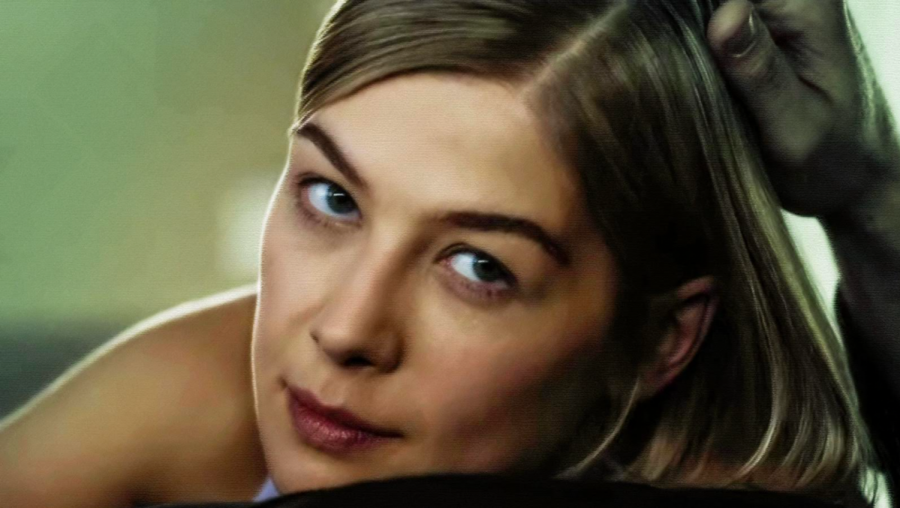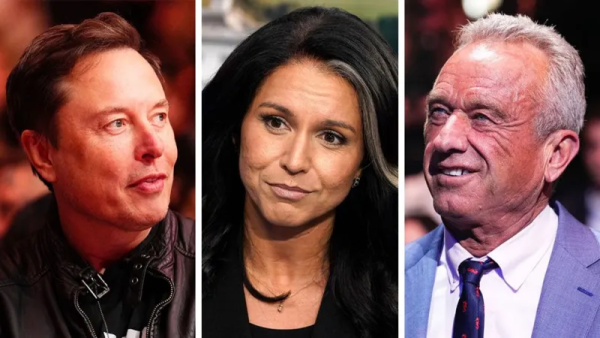The “Good for Her” Cinematic Universe: Psychopath or Girlboss?
Amy Dunne in Gone Girl is one of the most famed depictions of the “Good for her” trope in film. In this trope, the female leads overcome patriarchal obstacles and enact revenge.
For decades in film, women have been depicted in various flattering ways: the psycho ex-girlfriend, the awkward virgin, the introverted nerd, the damsel in distress, and many more. But in recent years, a new character type has arisen, garnering attention and popularity: the “Good for her” trope.
The term “Good for her” originated on the comedy show Arrested Development. The trope refers to a woman traditionally burdened with patriarchal obstacles. This woman utilizes manipulative, morally gray, and sometimes violent tactics in order to regain agency over her life and enact revenge on those that tortured her, the oppressors typically being men. Gone Girl, Ready or Not, Us, Promising Young Woman, and The Invisible Man are some of the most well known examples that depict this character trope.
Traditionally, women’s personalities and emotions in film have been simplified. Films that utilize the typical female archetypes establish that a woman can not be both beautiful and intelligent, introverted and well-liked, angry and stable. Women’s humanity is stripped away through the continued representation of one-dimensional female characters in television, making the “Good for her” sub-genre a step in the right direction to disassembling the misogyny ingrained in cinema.
“For so long, women in film have been stereotyped and been treated more as eye candy than anything else,” senior Mackenzie Rebello said. “I think it’s about time to break free from that and show women that have multiple sides to their character.”
It is important to note, though, that not all of these female characters are devoid of flaws. They can be violent, cruel, and manipulative, and their actions should not be praised or admired. But, we can see truisms in their motives. Take Amy Dunne from Gone Girl, for example. She is a psychopath that cleverly calculates her punishments against the men that have wronged her. But ultimately, her words hold relatability and are valuable. In her famed “cool girl” monologue, she says, “Cool Girls never get angry; they only smile in a chagrined, loving manner and let their men do whatever they want.” Women are often pressured to suppress their anger, appear unbothered, and alter themselves to cater to the preferences of the men in their lives. In Promising Young Woman, Cassie continuously schemes and executes her manipulation of predatory men in an attempt to save other women from sexual harassment. She goes so far as to convince a rape apologist that they were sexually assaulted in order to teach them a lesson. Despite this cruelty, the majority of female audiences can relate to Cassie’s grievances in regards to men’s complicity.
“I feel like women are pressured to act a certain way and be a certain person, and we see that a lot in film,” Rebello said. “For example, the dumb blonde, the angry Black lady, etc.”
Despite the positive representation within this cinematic universe, it lacks diversity. The majority of these films are centered around the lives of white women. Us and Knives Out are two films from the “Good for her” universe that have women of color as their leading ladies. Knives Out, specifically, does a great job of displaying the intersectionality of sexism and racism that women of color face. The leading lady, Marta, is a Latina woman that outwits the privileged white family that she works for, overcoming the mistreatment she received from them. It is imperative that we diversify this film subgenre and depict women of color with the same complexity and thought as we have white women.
The “Good for her” archetype finally portrays women who are complicated, interesting, and multi-faceted. Additionally, the female leads in these films have control over their character’s outcome. They are allowed to be impenitently angry and spiteful and emotional. And anger is what all of these leading ladies are driven by. For decades, in film and in real life, female rage has been represented negatively, portraying women to be dangerous, overdramatic, and unstable. In the “Good for her” adaptations, we can see women whose actions shouldn’t necessarily be condoned, but who are unashamed in their emotions.
This portrayal is imperative given that the scornful woman has societally been seen as the one capable of harm, not the one harmed. Their emotions and fury are not justified; instead, they are abashed and these women are characterized as “bitchy” and “irrational.” We see these prejudices manifest into female stereotypes: the nagging wife, the feminazi, and the crazy ex-girlfriend.
“I think that the ‘Good for her’ trope is women’s message to society that we’re not taking sh*t from anyone anymore,” Rebello said. “We’re willing to kick and scream to be treated how we deserve to be treated.”
The “Good for her” films grant us an honest portrayal of a woman, a woman unapologetic in her anger, a woman refusing to bury her pain and convey a jovial mood. Women’s fantasies of retribution against those who have wronged them are fulfilled by the women in this sub-genre. This trope gives us an unbridled depiction of female rage, female rage that is not undermined or set aside, but instead taken seriously. These movies provide social commentary surrounding the social and gender expectations for women. And to put it simply, the “Good for her” cinematic universe grants us female leads that defy the typical female character type, leaving the “psycho ex-girlfriend” to wither in the past.

Marie Shvakel is a 16-year-old junior. This is Marie’s third year writing for The Stampede. She enjoys...







